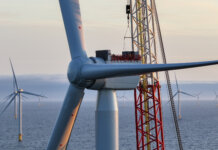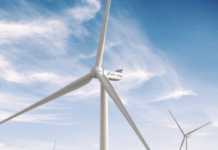TNO and Whiffle have developed a new research method focused on better calculating how wind behaves at a wind farm in the context of the increasing height of wind turbines and length of their blades.
“The aim was to enable more realistic modeling of the performance and reliability of wind turbines operating in the field,” says TNO’s Simone Mancini. “These factors are the result of the aerodynamic interaction between the wind and the turbine blades. Loads depend to a large extent on the characteristics of the wind field. The atmospheric wind behavior is complex and site-specific. Wind behaves erratically and unpredictably.”
The researchers say current models are too simple and based on statistics and assumptions that are not representative of the high variation in the conditions at a wind farm, especially offshore. There is still a gap between what wind turbine designers use for their calculations and what happens once the turbines have been installed and put into operation.
TNO’s and Whiffle’s AeroLES project is developing and validating new computational methods to take into account the complexity of real atmospheric wind when designing next-generation wind turbines. The latest research combined Whiffle’s atmospheric models with TNO’s wind turbine aerodynamics models. Wind field predictions obtained with the new numerical tool were validated against real wind measurements at a ridge in Germany, a plain in the Netherlands and at the North Sea. The results offer designers of wind turbines new insights into ways to make them cheaper and more efficient.
The full findings have been published in a report that can be accessed here.




